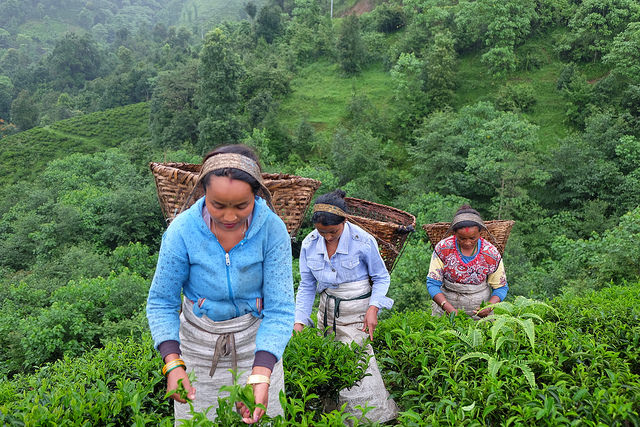On November 28 and 29, some 25 country representatives from Latin America, Africa and Asia Pacific gathered in Rome and virtually with UN-REDD experts and invited guests for a REDD+ dialogue on strategic finance pathways for forest solutions. This dialogue aimed to help REDD+ countries map the increasingly complex landscape of options to finance REDD+, and update their financing strategies to better implement and scale up forest-based climate action in support of their NDCs. Sessions focused on financing REDD+ implementation, results-based and performance-based finance, how to engage non-forest sectors in financing REDD+ and Article 6 (market and collaborative approaches) and voluntary carbon markets.
REDD+ journeys have been long for many governments, yet participants confirmed the appetite for REDD+ is still alive. However, action must be taken to support governments with the increasingly complex and multiple requirements and with the high transaction costs of implementing REDD+.
Currently only 2.5 percent of the tracked financial flows for climate action go to the agriculture, forestry and land use sectors. While the total amount of climate finance is estimated at $16.3 billion, REDD+ country needs are approximately $423 million per year. As was set out at the start of the dialogue, and through the voices of participants, it is essential to close the funding gap for forest finance. Financial flows for forests pledged at COP26, and commitments reiterated at COP27, have failed to materialize. There is no doubt that the momentum of finance is real. However, this needs to flow to the countries at both the national and community level and in the form of upfront and ex-ante finance.
Coupled with a lack of funding flowing to where it is needed the most, there is the issue of the price of carbon. The collective voice of participants was that the current cost of forest carbon not only fails to cover transaction costs, but it also makes it unattractive for countries to invest in sustainable forest initiatives. Indeed, the UN-REDD message at COP27 was that the floor price of REDD+ should start at 30USD/t-co2 to compensate for the average cost of interventions to ensure forests are sustainably managed, to ensure compliance with social and environmental safeguards and to cover governance costs. While high social and environmental integrity carbon credits that demonstrate the value of multiple benefits, can push up the price of carbon with the private sector, the call for a harmonization of standards, indicates the barriers still faced by countries to access sufficient and appropriate finance.
“Different criteria of standards presents another challenge. There needs to be some similarity of standards and methods.”
- Finance dialogue participant
Participants shared stories of the realities on the ground, particularly for marginalized stakeholders such as Indigenous peoples and local communities, smallholder farmers, women and youth. It is here that the intersection of drivers of deforestation and opportunities for innovative business models and effective policies have the potential to be transformed with forest finance.
“We tried to change people’s mindsets. Before we were cutting forests for income. Now, we are keeping trees standing for income; this means working on REDD+.”
- Finance dialogue participant
Over the last two decades, agricultural expansion has driven almost 90 percent of global deforestation. The connection between agriculture and forestry is at the very heart of REDD+ today and increased investments in sustainable agriculture and agri-food solutions are needed at scale. Territorial approaches and greater policy coherence could create greater synergies between the agriculture and forestry sectors.
“If we don’t have a territorial management plan which covers land allocation within protected areas, mining and agriculture, there will always be some sort of conflict and it will be difficult to achieve our goals.”
- Finance dialogue participant
In a context of limited financing, coupled with the need to scale up action, an efficient and effective use of available finance is essential. This calls for countries to consider a more comprehensive and strategic response to align global and domestic financial systems to make them consistent with climate mitigation. For REDD+, this would involve particular attention to financial and fiscal policies for the agri-food and land sectors. A blend of existing and novel domestic and international financial instruments are needed to close the financing gap, including grants, subsidies, loans, risk capital and others. Instruments such as green bonds and blended finance offer promise, but their uptake is still limited. UN-REDD is committed to supporting partner countries to navigate and harness this increasingly complex financing landscape, and in doing so, ensure forests are protected and sustainable livelihoods secured.
This dialogue is the first in a series of events to be continued in 2023 to deepen the dialogue among REDD+ countries and to assist them in navigate the evolving landscape of finance for REDD+ and forest-based solutions, including through the mechanisms of Article 6 of the Paris Agreement, bilateral initiatives and multilateral sources. To coincide with the dialogue, UN-REDD has launched a community of practice on REDD+ Finance.
To find out more, or register to join, please visit: https://forestclimatesolutions.dgroups.io/g/finance
Author:
Jessica Ball, UN-REDD Knowledge Management specialist



